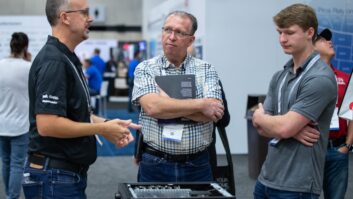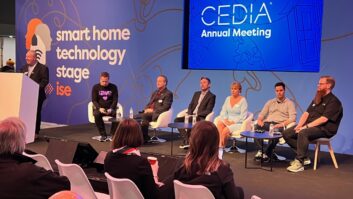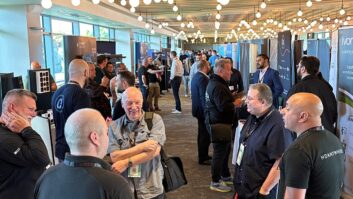
More than 20,000 attendees were drawn to Atlanta by product offerings from over 450 exhibitors at CEDIA Expo 2010, but the raw numbers do not even begin to tell the story of an event – and indeed an industry – that is going through a period of profound change.
Like much of the residential systems industry it serves, CEDIA’s US Expo rode the crest of a wave in the middle of the past decade, its aisles populated by elaborate stands showcasing the latest in exclusive and increasingly expensive home cinema technologies. The home-cinema products are still there, with 3D acting as a new driver for manufacturers of projectors and flat screens.
Increasingly, though, the emphasis at CEDIA is shifting away from a single room that serves a unique function to the multi-purpose, multi-media world of whole-house system. In the post-recession world, the show is much less about entertainment, much more about automation.
Such a shift also implies a change in skill sets, and CEDIA itself has not been slow to recognise this. The association was once seen – at least in some circles – as a cosy club of specialists who guarded their niche market with barely disguised jealousy. All that is set to change. Utz Baldwin (pictured), CEDIA CEO, called for the creation of a “bottom-up association” in his opening press-conference address.
“Our industry is poised for growth, but if we don’t embrace energy management, home healthcare and telepresence, then somebody else will,” Baldwin continued. “Around 20% of our attendees at this year’s show have never been to a CEDIA Expo before, and that says something to me: our umbrella is getting bigger.”
In the face of an increasingly fragmented industry, the new breed of CEDIA associate members – all of whom will henceforth be given a vote in association elections – will come from a wide variety of backgrounds. What they will have in common is their ability to deliver value in the systems they design, and support those systems over time. As Baldwin put it: “The word ‘custom’ used to be a product category. Now it’s a level of service.”
On the show floor, the Expo’s new Future Technology Pavilion acted as a focus for some of the new developments likely to shape tomorrow’s automated home. These included HDBaseT, a new connectivity technology for the long-distance transmission of uncompressed HD video, audio, 100BaseT Ethernet data and AC mains power over standard Cat5e/Cat6 cable and RJ45 connectors. A viable – and much more versatile – alternative to unpopular or outdated connections such as HDMI, RF and component video, HDBaseT promises to make the integrated home a much easier thing to create, with set-top boxes, games machines, Blu-ray and 3D DVD players, and personal computers all happy to take their place on the network.
Of course, European integrators might shrug their shoulders at a technology that makes such good use of structured cable. After all, few European homes – even new ones – are being fitted as standard with such an infrastructure. For these, another key trend at CEDIA Expo was perhaps more significant: the wider availability of networked AV systems that can use AC mains cable as their backbone. These so-called ‘powerline’ systems appear perfect for the millions of European homes that are too old to stand the expense (or the mess) of having an all-new cabled infrastructure being imposed on them.
The trend could be so significant, in fact, that, CEDIA has gone as far as to create a new manufacturer grouping for it. Known as the Retrofit Technologies Group, this takes its place alongside other new special-interest subsets within CEDIA. Others include the Industry Outreach Group (focused on marketing to the architecture and design communities) and the Performance Entertainment Group (designed to raise awareness of high-performance AV solutions in today’s world of iPods, iPads, and their heavily compressed audio).
“If your company is engaged in the design and/or installation of technology in the home, CEDIA is your association,” Utz Baldwin concluded, banging the final nail in the coffin of the ‘exclusive club’ business model.
The only question that remains is what will happen to all those padded leather cinema seats. We can only hope that they retain their place when the Expo returns to its spiritual home of Indianapolis in 2011 – for, if nothing else, they provide welcome respite for the foot-weary tradeshow attendee…
For a further report on CEDIA Expo 2010, click here.





